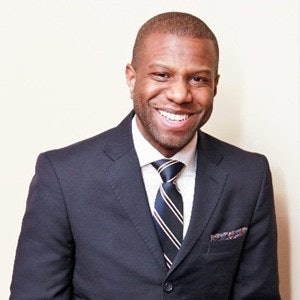Tyton Partners, a provider of strategy consulting and investment banking services to the education sector, has published three reports that highlight achievement gaps among students from historically underrepresented groups.
Tyton published “Driving Toward a Degree: Closing Outcome Gaps Through Student Supports,” “Hitting Their Stride: Building Momentum Through High-Quality Implementation and Commitment to Change,” and “Time for Class: The State of Digital Learning and Courseware Adoption.” The reports, with funding from the Bill & Melinda Gates Foundation, were produced in collaboration with several organizations as well as the participation of 7,400 faculty and administration from approximately 1,500 institutions. They identify areas of progress and highlight practices that have narrowed graduation rate gaps for students of color and low-income students. Kristen Fox
Kristen Fox
“Institutions in service of closing the persistent equity gaps that we see in higher education need to [be], and many are, engaging in expansive and intentional strategies across the student life cycle that are intentionally designed to be anti-racist and inclusive of serving the diversity of populations that higher education needs to serve,” said Kristen Fox, managing director of Tyton Partners.
Dr. Ivory Toldson, a professor in the Department of Human Development and Psychoeducational Studies at Howard University, served as an advisor on the research.
“We wanted to create the kind of information that would normalize rather than pathologize students with diverse experiences,” said Toldson. “We wanted the data to provoke a deeper understanding and further inquiry into the experiences of students who have not fared the best historically in our traditional higher education systems.”
Integrated, high-quality advising enabled by technology closes equity gaps.
Fox said there must be institutional investment — both monetary and prioritization. Tyton Partners research shows even open access, under resourced institutions that are making commitments to effective advising, are seeing equity gaps closing.
By example, using advising technologies, such as caseload management solutions as noted in the “Driving Towards a Degree" report, can be effective. A virtual channel through which students can access their advisors has also been beneficial due to the flexibility it provides students.
Measuring results disaggregated by race, socioeconomic status, and other factors promotes continuous improvement and scaling of practices that can close equity gaps. Fox said that while advisors are more likely to have access to student data, faculty often do not have access to data about how their students identify with various demographics.
 Dr. Ivory Toldson
Dr. Ivory Toldson
Catherine Shaw, a director at Tyton Partners, said that without such data it is hard for an institution to improve outcomes. “We want institutions to take ownership of whether or not their outcome gap for Black students or Latinx students has narrowed or widened over the last decade,” said Shaw, who says she wants to see disaggregated data on retention and persistence rates in order to create more normative gap measures.
According to Fox, blended modes of instruction enabled by courseware save faculty time and correlate with the adoption of evidence-based teaching practices that close equity gaps. Various approaches are included in the “Time for Class” report. Fox said courseware and all instructional materials need to be inclusive and reflective of the lived experiences of the broadest range of students.
“There is extensive literature that shows that digital learning implemented well can significantly help students in terms of lowering cost towards degree and enabling them to persist and complete,” said Fox. “It needs to be part of an overall institution-wide commitment to ensure that students have access to devices. The Cal State University system is one good example in terms of making sure that all students have access to devices and Wi-Fi … as well as support around digital literacy both for instructors and students.”
Shaw, who was an adjunct college instructor during the onset of the COVID-19 pandemic, said creating asynchronous courses are advantageous for a student who may not be able have consistent internet access and therefore cannot always log on at a specific class time. They can log on later and see recorded content. She said she would also like to see more institutions add technology and internet costs to the cost of attendance definition.
“We need to look at how there was a leveling of the playing field when you got the technology right,” added Toldson. “Now that we know that technology is such an integral part of not only making sure they have equal access, but it also could be a lever in helping to resolve a lot of long-standing equity gaps.”
The “Hitting Their Stride” report examined how the pandemic brought changes in how education is delivered. Bringing courses online also showed that student supports, such as counseling and mental health, can be brought online.
“The infusion of federal dollars has enabled institutions to make investments in change related to increase of digital learning tools and technology and increased use of advanced advising practices,” said Fox. “We’ll continue to see that experimentation with the use of digital learning tools to engage in active learning and teaching practice, but … without institutional support and the policies, technology, leadership and culture supporting innovation around pedagogy … there will be burnout.”















